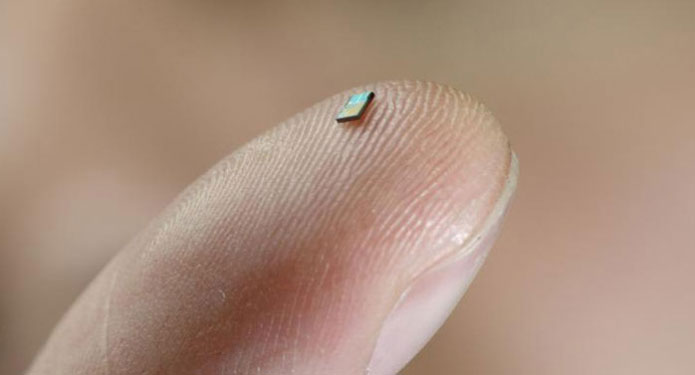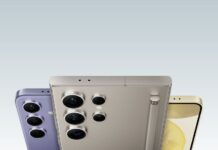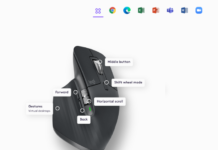PREMISS – New Tiny Wireless Temperature Sensor Never Needs To Be Charged
A team of researchers at the Eindhoven University of Technology in Eindhoven, Netherlands has built a tiny wireless temperature sensor that can charge itself using only the energy transmitted by a wireless network – THE PREMISS. The sensor doesn’t require a battery and never needs to be recharged. The PREMISS, a tiny wireless temperature sensor, is based on 65-nm CMOS technology.
This tiny wireless temperature sensor weighs as much as a grain of sand. It is weighing only 1.6 milligrams and measuring just two square millimeters.
The sensor is able to work beneath a layer of paint, plaster or concrete. This makes the sensor easy to incorporate in buildings, and could be “painted” onto a wall with a normal latex paint, said professor Peter Baltus, a professor of wireless technology at the university.
The tiny wireless temperature sensor contains an antenna that captures energy from the signals transmitted by the router. The sensor stores that energy and, once it is charged, the sensor quickly switches on, measures the temperature and then sends a signal to the router. This signal has a slightly distinctive frequency, depending on the temperature measured. The router can then determine the temperature from the frequency.
The same technology enables other wireless sensors to be made,
Similar sensors could be used to make smart buildings more energy efficient, the university said in a post. “The smart buildings of the future will be full of sensors that will respond to the residents’ every need, and will be as sustainable as possible. Like heating and lighting that only switches on when someone is in the room. That’s only possible if these sensors are wireless and need no batteries, otherwise, in a large building, you would have to change the batteries every day. ”

Right now, the tiny wireless temperature sensor won’t work if, there are more than 2.5 centimeters of distance between the sensor and the router.
However, the team of researchers said in a press release that they expect to extend that range to nearly 10 feet within a year and that the technology will eventually work up to 16 feet away from a router.
IMAGE CREDIT: BART VAN OVERBEEKE/EINDHOVEN UNIVERSITY OF TECHNOLOGY.
















































